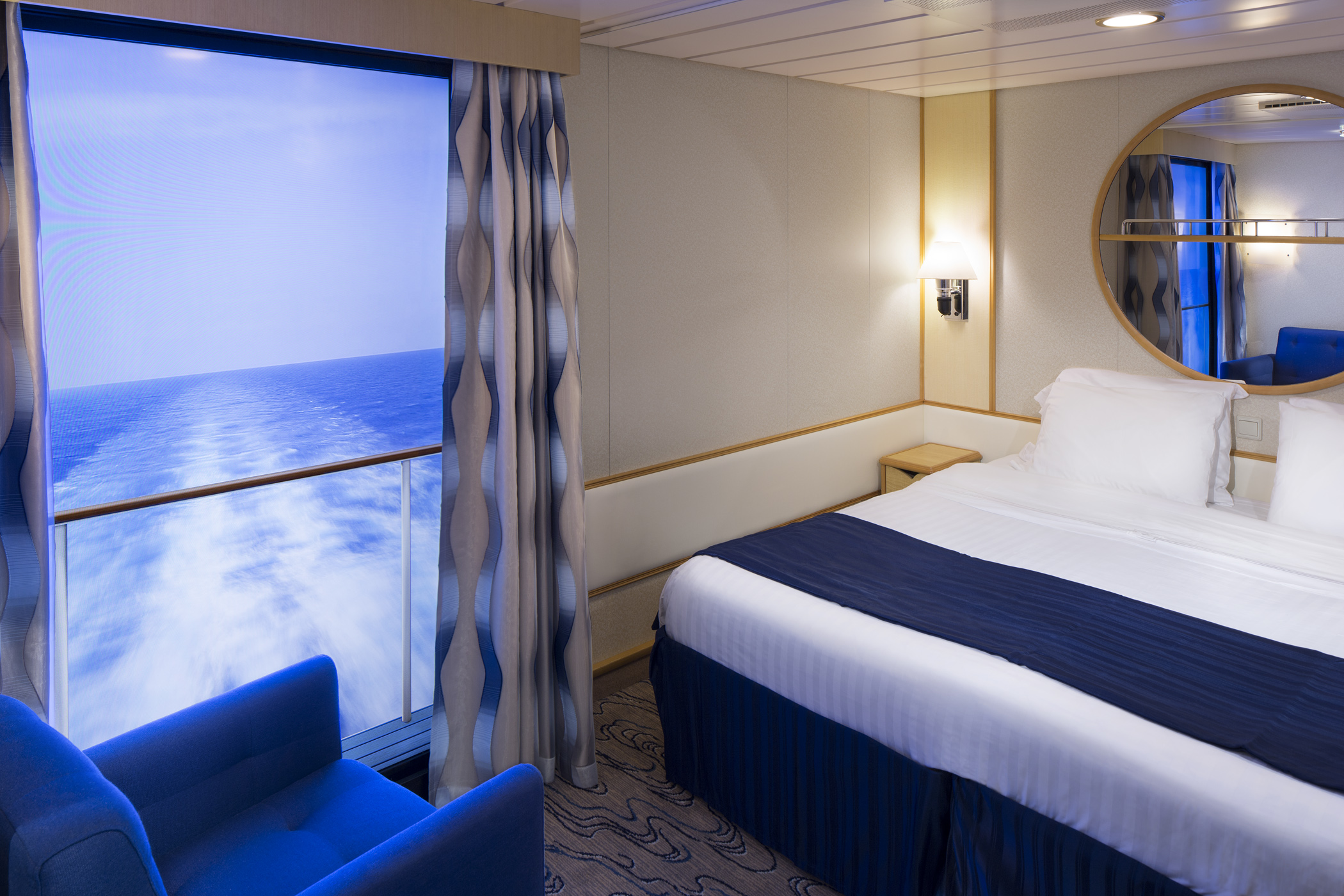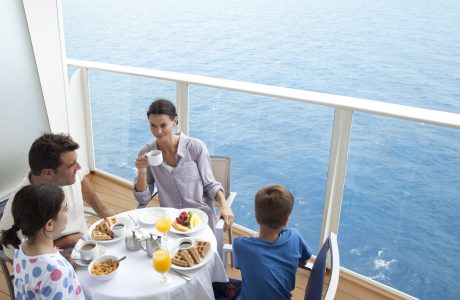As the ship sails at 22 knots towards your next port of call, you realize you could have listened to the sounds of the water while watching the sunrise from the comfort of your bed. Too bad you didn’t book a suite with a balcony, right?
Turns out, an inside room can be just as good. On Royal Caribbean’s newest ship, Quantum of the Seas, all interior rooms now have a “Virtual Balcony” — a full high-definition 80-inch screen that is connected to a live camera with audio outside the ship, so you can enjoy the same sights and sounds as someone with a balcony or oceanview room. “Virtual balconies are giving you the experience of having a balcony without actually having a balcony,” said Olen Gibson, IT Ship Work Project Manager at Royal Caribbean International. “The idea is to make it as real as possible.”
Virtual balconies were initially rolled out in 81 rooms on Navigator of the Seas when the ship was renovated, but the inside sea views were originally designed for Quantum of the Seas. All of Quantum’s 373 interior staterooms will have this feature.
It sounds like a great technology, but these virtual balconies can’t actually feel real, can they? Guests say they do. “We were surprised in early focus groups with guests onboard Navigator of the Seas to learn they valued the experience to such a degree that they would rank a Virtual Balcony stateroom not only above an inside stateroom, but even above a stateroom with a window,” Ronnie Farzad, Manager of Entertainment Technology at Royal Caribbean International.
But bringing these real-time views inside is no easy task. Getting the image captured on camera to the server room and then onto the screen in the stateroom is a complex technological process that requires extensive processing of the signal. “There’s a lot of moving pieces,” said Gibson. “The challenge is getting it all working together and having a cohesive image once you’re done.”
Having crystal clear imagery on the screen is necessary for depicting a lifelike view. So, the team invested in RED Epic cinema cameras – which have been used to shoot Netflix’s House of Cards and Syfy’s Sharknado – to allow for the highest quality live feed. Using an optimal recording speed is also crucial. “The higher the frame rate, the more lifelike the experience feels. The quality of the camera and its ability to correctly translate color are also key, but the frame per second is what drives the difference between TV and reality,” said Farzad.
Virtual balconies must also offer the right sounds to make guests feel the ambience of the open seas. “The live audio is key to creating the ambience. There is something about the ambient sounds of the balcony–waves crashing, seagulls, port sounds–that pull you in,” said Farzad.
And these virtual balconies can even help reduce motion sickness as well. The developers brought in advisors from MIT and Harvard to help them understand some of the underlying causes of seasickness. They studied the mechanisms of the inner ear that contributed to seasickness and also found that it was essential that the virtual balconies match the view that is outside their part of the ship.
Minimizing the gap in time between when the image was shot and when it’s viewed in the stateroom also plays a crucial role in minimizing any chance of seasickness. Keeping the latency, or difference in time between when the camera captures the image and when it appears on the screen, under three seconds was essential. “We realized during testing that movement of the horizon was a key contributing factor in seasickness. So, we have leveraged a wide angle lens to minimize horizon movement,” said Farzad.
The final product is a picture perfect view from an interior room that feels and sounds just like the real thing. Farzad believes the virtual balconies add a special touch for guests. “The technology creates a feeling that enhances the guests’ vacation experience.”




